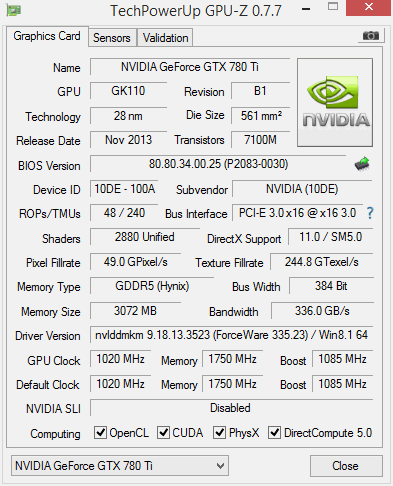
Preview: Goliath proves too much for David
We received the KFA2 GTX 780 Ti Hall of Fame (Hoff) sample while we were testing the EVGA Hadron Air chassis and we could not resist the temptation of trying it out in a mini-ITX box. We know it sounds a bit like putting a huge V8 in a Mini, but bear with us - it's not as weird as it seems.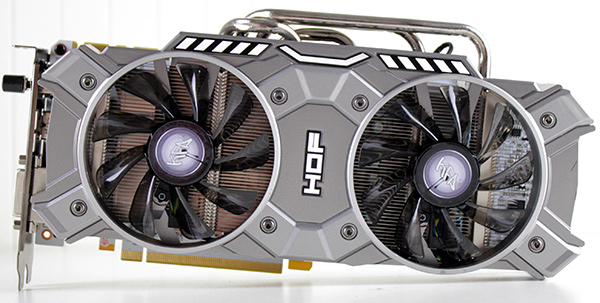
It is obvious that the Hoff's huge cooler will have no trouble keeping the card cool in a spacious chassis with plenty of airflow, but will it be able to cope with a tiny mini-ITX chassis, with very little volume to spare? Let's see what happens.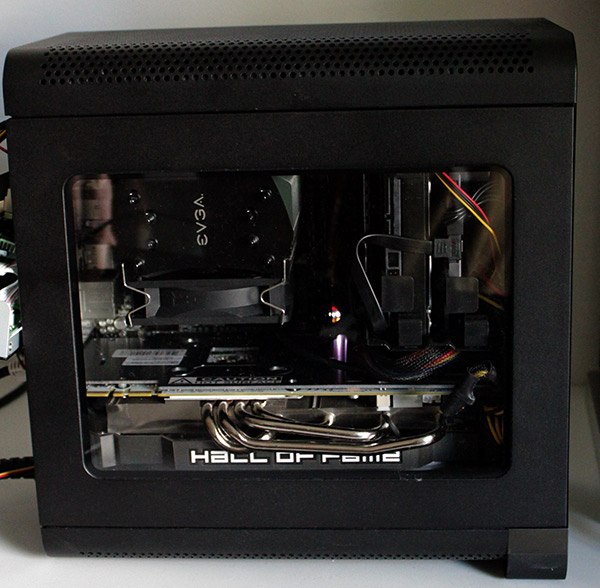
The EVGA Hadron Air is an odd little beast. It was designed for enthusiasts who need a relatively small form factor that can pack quite a punch. At only 12in/305mm in height and 6.6in/169mm in width, the EVGA Hadron Air is one of the smallest enthusiast chassis available today. LAN parties aren't as popular as they used to be, but the chassis still makes a lot of sense for gamers on the go.
The KFA2 GTX 780 Ti Hoff is a graphics card for enthusiasts and it's aesthetically pleasing, despite its oversized cooler. The triple-slot cooler looks menacing and underneath a huge array of fins it has four thick, copper heatpipes and a white PCB. Two 90mm fans provide enough airflow to keep the 7.1-billion GPU from overheating.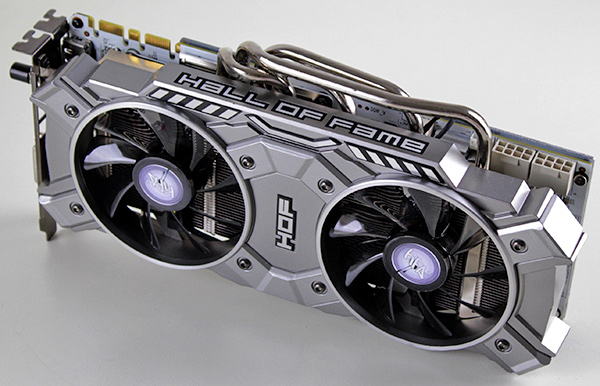
The Hoff draws power via two 8-pin power connectors. You will find two molex to 8-pin power converters in the package. The rear of the PCB features aluminum backplate, which is not really important for the performance but it makes overall design much more visually appealing.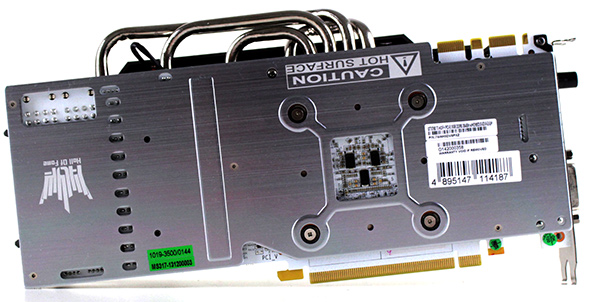
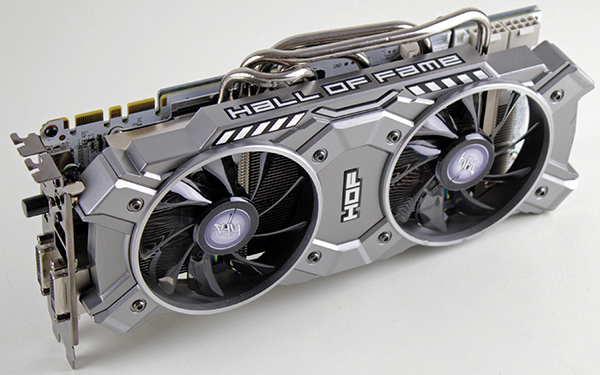
The I/O panel of the Hoff card contains four video connectors and three of them can be used at the same time. The black button next to the video connectors is the Hyper Boost button - push it to spin the fans up to maximum. This DEFCON2 mode can be useful if you notice the GPU temperature is climbing over 80ºC, which is Nvidia's default thermal threshold for the GTX 780 Ti. Once you hit the 80ºC mark, the card starts throttling and Boost clocks go down. Hyper Boost allows you to drop the temperature in no time, with a short burst of high-speed airflow, with the accompanying high noise of two 90mm fans maxed out. It's shock therapy, but it's helpful, even more so in a mini-ITX chassis.
The icing on the cake comes in the form of a hefty factory overclock. KFA2 bumped the base clock up from 875MHz to 1020MHz. The boost clock now stands at 1085MHz, up from 928MHz on Nvidia's reference design. GPUZ provides us with more useful info - the memory was left at reference clocks and the card features a standard 3GB of memory, which should be more than enough for most users.